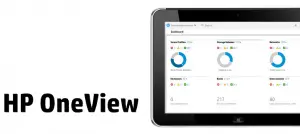 With the 1.20 release of HP OneView, HP has opened up the ability to monitor hardware without controlling all configuration and deployments using the tool. Along with the 1.20 release, HP introduced the OneView Standard license, which is a free license that allows HP customers to run OneView for monitoring only of hardware. This license level lets users use the dashboard and alerting features to view all of their ProLiant G6 and G7 hardware along with Gen8 and Gen9, including blade enclosures. These changes allow OneView to be a drop-in replacement for system management and replace HP System Insight Manager in many deployments.
With the 1.20 release of HP OneView, HP has opened up the ability to monitor hardware without controlling all configuration and deployments using the tool. Along with the 1.20 release, HP introduced the OneView Standard license, which is a free license that allows HP customers to run OneView for monitoring only of hardware. This license level lets users use the dashboard and alerting features to view all of their ProLiant G6 and G7 hardware along with Gen8 and Gen9, including blade enclosures. These changes allow OneView to be a drop-in replacement for system management and replace HP System Insight Manager in many deployments.
For comparison, with the full-featured OneView Advanced license, customers can manage deployments on ProLiant Gen8 and Gen9 hardware. Customers can create server profiles and provision these onto blade and rackmount ProLiant hardware. In addition to ProLiant, OneView is also able to control network configuration for blade hardware and storage configurations connected to blade and rackmount hardware.
Hands-On Impressions
For anyone reading who may be accustomed to HP System Insight Manager (SIM), HP OneView is a huge leap forward. The UI is intuitive and easy to learn. The Standard license level allows most people to replace HP SIM if they have current generations of ProLiant hardware.
Once I deployed HP OneView in my environment, all that was needed was connecting it to my blade enclosures and ProLiant rackmount servers. The connection point is the iLO, so you fill in the iLO’s information, a username and password and then HP OneView configures its own user account on each server to connect and poll from the system.
After connecting the systems, you have a Dashboard view that shows you system health and problems. Its a pie chart that will show you color coded sections for systems either incompatible (in grey), healthy (green) or with warning and problems (yellow and red). You are able to click and drill down into each one of the slices to get filtered information about warnings or errors. The inventory is great and has good controls for filtering by state. In addition, you can look at servers by hardware type and see how many of each model you have plus, how many different configurations you have within a particular model – based on expansion cards and stats.
Admittedly, there is a lot of additional functionality that remains empty in a monitoring only configuration. Server profiles and interconnects areas will be blank.
In comparison with HP SIM, I’ve had OneView running for monitoring for months and have had to do zero babysitting. The alerts that come from OneView are superior to SIM. The alerts correlate the system name and alert state correctly, where SIM often has difficulty identifying the system name and usually reports things under the system serial number instead. We have them running in parallel currently and I get alerts from both systems, but I get more useful information from the HP OneView alerts.
I’m not sure I know anyone who would willingly choose HP SIM over HP OneView after giving a test drive. SIM still has a place if you have a lot of legacy hardware, ProLiant G5 and below. But, so far, this is a great step forward for system management as an HP customer.
FAQ for HP OneView 1.20 Release
